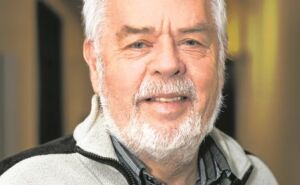News
They called him Mr Saviour
This article is more than 2 years old.
Owner Ejvind Sandal recalls a quarter century of high hopes and hard work at the English-language newspaper. But all good things come to an end

Ejvind Sandal has been an invaluable person in the history of The Copenhagen Post
The date 26 July 1999 was a significant one for The Copenhagen Post. In a way it should have marked the last copy of the English-language newspaper to hit the streets – exactly 17 months after its launch.
But it instead unveiled its saviour: a giant of a man with an equally huge vision. Ejvind Sandal saw potential in the newspaper where others didn’t.
READ ALSO: The Copenhagen Post under new ownership
Close to 25 years
On page two of the July 26 issue, the then 56-year-old Danish lawyer expressed his confidence there would be a “significant growth in the market for English language information, not only in Denmark, but in the whole of Scandinavia”.
He went on to exclusively bankroll the newspaper for 18 years, conceding his majority shareholding in 2017 as part of a management buyout that left him with a ‘main shareholder’ stake of 28 percent.
This continued until 2023 and the newspaper’s takeover by The Willmore Group, its new owners.
READ ALSO: The Copenhagen Post says: A new beginning
Lifeblood of the paper
It’s no exaggeration to say The Copenhagen Post would have ceased to exist on numerous occasions without Sandal’s support.
His advice – sorely sought out by all manner of Danish business, from Vestas to Brøndby IF, to chair their boards – was invaluable along the way.
For just under 25 years he has been the lifeblood of a media company that owes him an enormous debt – as do legions of readers who have benefited from the vital service he helped provide.
What have been your primary goals with the newspaper – and your biggest triumphs?
“We scored a few remarkable moments, like when we interviewed the Indian PM at arrival and presented him with a copy of the newspaper with him on the front page five hours later when he had made his address to Danish Industri. During COP15 we published a daily newspaper serving the 25,000+ internationals attending the summit.”
What hopes do you have for its future?
“In the future I expect the megatrend to continue. The demand is there. However, we may have to address social media and build on the respect that our many years of editorial quality has gained.”










































